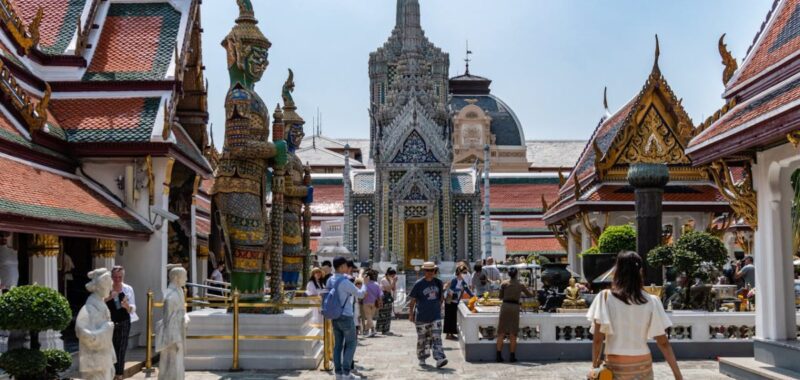Skift CEO Rafat Ali discussed the current state of tourism in Southeast Asia with Gary Bowerman and Hannah Pearson, hosts of The South East Asia Travel Show. They addressed, among other topics, how the region has rebounded from the pandemic, the significance of Chinese travelers, and the future of Southeast Asia’s tourism industry
Listen Now
ð§ Subscribe
Apple Podcasts | Spotify | YouTube | RSS
Five Key Points
Southeast Asia Tourism Outlook: The region had a strong start in 2025, nearing full post-Covid recovery, but sentiment has recently shifted due to global economic pressures, especially from U.S. tariffs. However, actual travel numbers remain stable for now.
Chinaâs Central Role: Chinese travelers are the most significant international visitors to Southeast Asia. While recovery has been gradual since China’s reopening in 2023, current geopolitical tensions and economic strain from tariffs are expected to affect Chinese outbound tourism.
Underdeveloped Sports Tourism: While outbound sports tourism is strong (e.g., fans traveling to the Premier League or Olympics), Southeast Asia lacks high-profile, A-level sports events that can attract inbound tourism. The Middle East currently leads in using sports as a tourism and branding strategy.
Best-Case Travel Scenario for the Region: Optimally, there would be a resurgence of intra-Asian travel, especially if Chinese and Indian travelers increase regional activity. A strong China and India are seen as key pillars for boosting tourism investment, infrastructure, and the broader travel ecosystem across Asia.
Climate Change Impact: The region faces increasing extreme weather events, including typhoons, floods, and seasonal haze caused by both natural and man-made factors. These conditions are starting to influence regional travel decisions, especially during smog-heavy periods in places like Northern Thailand.
Episode Summary
Skift CEO Rafat Ali and guests Gary Bowerman and Hannah Pearson examined the evolving travel landscape in Southeast Asia, especially in light of new Trump-era tariffs and broader geopolitical shifts.
Although travel in the region remains steady, concerns are growing due to the weakening Chinese economy and its ripple effects, given Chinaâs role as the regionâs largest tourism source. Vietnam has emerged as a surprising frontrunner in attracting Chinese travelers, while countries like Thailand and the Philippines struggle amid negative publicity and geopolitical tensions.
The broader global economic crisis, driven in part by trade tensions and shifting diplomatic ties, is expected to disrupt travel trends, although itâs too soon to gauge the full extent. Attempts at regional visa integration, such as a shared ASEAN visa, have faltered due to a lack of political will, varying national interests, and intense competition for tourists.
The discussion also explored the current and future state of travel and tourism across Asia, particularly focusing on regional trends and emerging opportunities. Japan continues to see strong inbound travel, especially to less traditional destinations and for nature and skiing, while the country also shows innovation in regenerative tourism. Korea stands out for its cultural soft power, with K-pop and film drawing young travelers globally, and Korean outbound travel being more diverse than Japanâs.
The conversation closed with a preview of the upcoming Skift Asia Forum in May, where several travel executives gather in Bangkok to discuss what’s next for travel in the region.

The travel industry’s top event comes to Bangkok.
May 14-15, 2025 – BANGKOK

